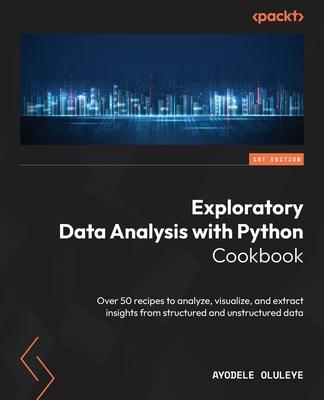Extract valuable insights from data by leveraging various analysis and visualization techniques with this comprehensive guide
Purchase of the print or Kindle book includes a free PDF eBook
Key Features:
- Gain practical experience in conducting EDA on a single variable of interest in Python
- Learn the different techniques for analyzing and exploring tabular, time series, and textual data in Python
- Get well versed in data visualization using leading Python libraries like Matplotlib and seaborn
Book Description:
Exploratory data analysis (EDA) is a crucial step in data analysis and machine learning projects as it helps in uncovering relationships and patterns and provides insights into structured and unstructured datasets. With various techniques and libraries available for performing EDA, choosing the right approach can sometimes be challenging. This hands-on guide provides you with practical steps and ready-to-use code for conducting exploratory analysis on tabular, time series, and textual data.
The book begins by focusing on preliminary recipes such as summary statistics, data preparation, and data visualization libraries. As you advance, you'll discover how to implement univariate, bivariate, and multivariate analyses on tabular data. Throughout the chapters, you'll become well versed in popular Python visualization and data manipulation libraries such as seaborn and pandas.
By the end of this book, you will have mastered the various EDA techniques and implemented them efficiently on structured and unstructured data.
What You Will Learn:
- Perform EDA with leading Python data visualization libraries
- Execute univariate, bivariate, and multivariate analyses on tabular data
- Uncover patterns and relationships within time series data
- Identify hidden patterns within textual data
- Discover different techniques to prepare data for analysis
- Overcome the challenge of outliers and missing values during data analysis
- Leverage automated EDA for fast and efficient analysis
Who this book is for:
If you are a data analyst interested in the practical application of exploratory data analysis in Python, then this book is for you. This book will also benefit data scientists, researchers, and statisticians who are looking for hands-on instructions on how to apply EDA techniques using Python libraries. Basic knowledge of Python programming and a basic understanding of fundamental statistical concepts is a prerequisite.
